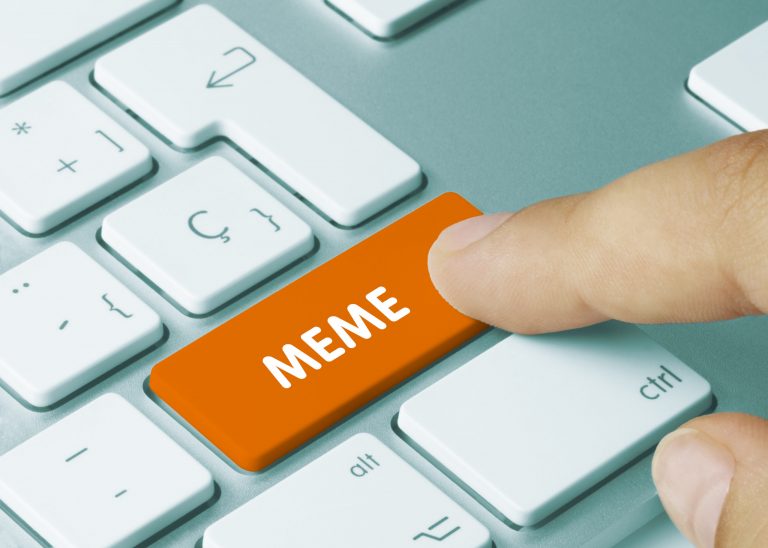If you’ve been living under a rock for the last decade, you may have missed it. An astounding amount of social media content and interaction revolves around memes.
But what are memes? Are there examples of memes? And why should credit unions care about them?
Because, let’s be honest here, credit unions should care about memes—and they should use them immediately.
What Is a Meme?
Many people suggest that a meme is merely words on a picture. I’m here to tell you that is an inaccurate definition. Actually, that’s the definition of an image macro, which is just one kind of meme.
(Fun fact: not all image macros are memes! Think about inspiration posters, for example.)
But what is a meme?
The textbook definition was written in 1976 by Richard Dawkins. The original definition is dry and academic, but it all boils down to this:
A meme is an idea—a fragment of culture—that gets passed around and evolves over time.
Generally, memes are iterative, so you can see how they change, develop, and intermix. This is often the easiest to see with image macro memes, but the dissemination of meme ideas and themes is apparent across almost every meme format.
Examples of Memes and Meme Formats
Think of all the viral joke formats, challenges, cultural references you’ve used in the last couple of decades. Remember the dancing CGI baby? The peanut butter jelly banana? LOLCats? Autotune (the news)?
These recognizable and iterative cultural fragments and ideas were some of the most recognizable internet memes. And make no mistake—memes have been around long before the internet.
However, here are ten of the most popular memes in the last decade and change:
- Image macros. Image macros can incorporate other meme themes in them. Plus, they’re easy to make and distribute, so they’re exceedingly popular. This is what most people think of when someone says “meme.”
- Rick rolling. Remember when every link was a Rick Astley landmine? And when, halfway through reading a paragraph on the internet, you realized the author sneaked in some version of, “never gonna give you up…”?
- TikTok dances. These days, everyone wants to make or master a new TikTok dance. Or, if it’s not a dance, maybe it’s a prank or a duet.
- The ice bucket challenge. Challenges invite other people to join in the fun and offer their own take on a phenomenon. The ice bucket challenge provided tons of cringe-worthy entertainment.
- Planking. Planking was that thing where people lay flat in strange locations and at odd times. It also resulted in some injuries—and even death.
- “That’s what she said.” How can you turn any phrase into cheeky, NSFW innuendo? Just add a classic “that’s what she said” to the end of it!
- Chuck Norris facts. There was a time when Chuck Norris and his exaggerated, otherworldly exploits made us all laugh. Now, we all groan.
- Lip dubs. A lip dub is a single-take video following a group of lip synchers. For a brief while, lip dubs were so popular that The Office aired one as their cold open.
- Harlem Shake. These videos started tame, then exploded with action to Baauer’s “Harlem Shake” song. It got old fast, but that didn’t stop anyone from having fun with it.
- Doge / misspellings. Misspellings were a common meme feature far before doges (dogs) got brought into the picture. But it took a Shiba Inu to really bring misspelled doge memes to life.
Basically, any idea, joke format, or cultural reference that can be repurposed, repackaged, and tailored to fit multiple situations is a meme. And believe us—the above are merely ten of hundreds of meme styles.
Why Credit Unions Should Care About Memes
Let’s keep this simple:
Memes are one of the easiest to make—and easiest to digest—forms of content out there. They’re infinitely shareable. They’re fun, funny, and approachable. They’re memorable. They can go viral.
If one of your social media goals is to encourage engagement and show brand personality, you’ll want to make or take part in some memes.
And don’t just make memes to promote services or sell things. The obvious commodification of a viral joke format will expose your credit union for being horribly out of touch! Just have fun with them—but keep things on topic.
Additional Reading
Stay tuned for part two coming soon! We’ll discuss how credit unions can make, take part in, or use memes to connect with members (and grow your social media presence).
Subscribe to our blog to hear more of the latest in credit union marketing! Or follow the links below to learn about credit union social media strategy.




